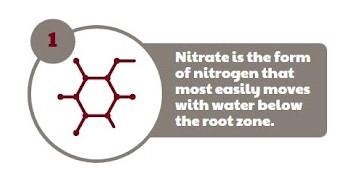
Today managing your wheat crop requires knowledge of the different growth stages of the plant. Growth stage identification is critical for scouting and proper timing of fertilizer and pesticide applications. Each week throughout the rest of the growing season I will discuss the various wheat growth stages I am seeing in our wheat fields and management issues at each stage. This week I will focus on Feekes 6. Most of our wheat has progressed to the Feekes 6 growth stage, some fields are approaching Feekes 7 growth stage.
Feekes 6 – First Node Visible.

Prior to Feekes 6.0, the nodes are all formed but sandwiched together so that they are not readily distinguishable. At 6.0, the first node is swollen and appears above the soil surface. This stage is commonly referred to as “jointing.” Above this node is the head or spike, which is being pushed upwards eventually from the boot. The spike at this stage is fully differentiated, containing future spikelets and florets.
You can remove and carefully examine plants for the first node. It can usually be seen and felt by removing the lower leaves and leaf sheaths from large wheat tillers. A sharp knife or razor blade is useful to split stems to determine the location of the developing head. The stem is hollow in most wheat varieties behind this node.
Management.
By Feekes 6.0, essentially all weed-control applications have been made. Do not apply phenoxy herbicides such as 2,4-D, Banvel or MCPA after Feekes 6.0, as these materials can be translocated into the developing head, causing sterility or distortion. Sufonyl-urea herbicides are safe at this growth stage, but for practical reasons, weed control should have been completed by now. Small grains can still show good response to N topdressing at this time.
Source : osu.edu